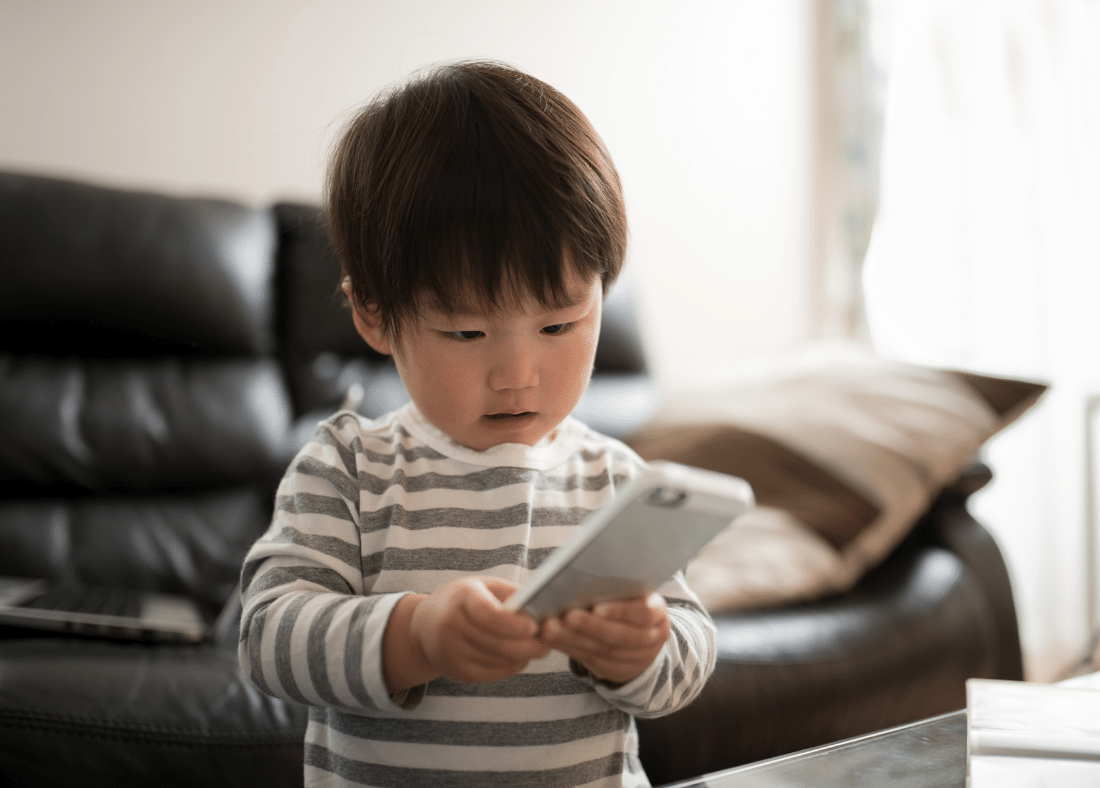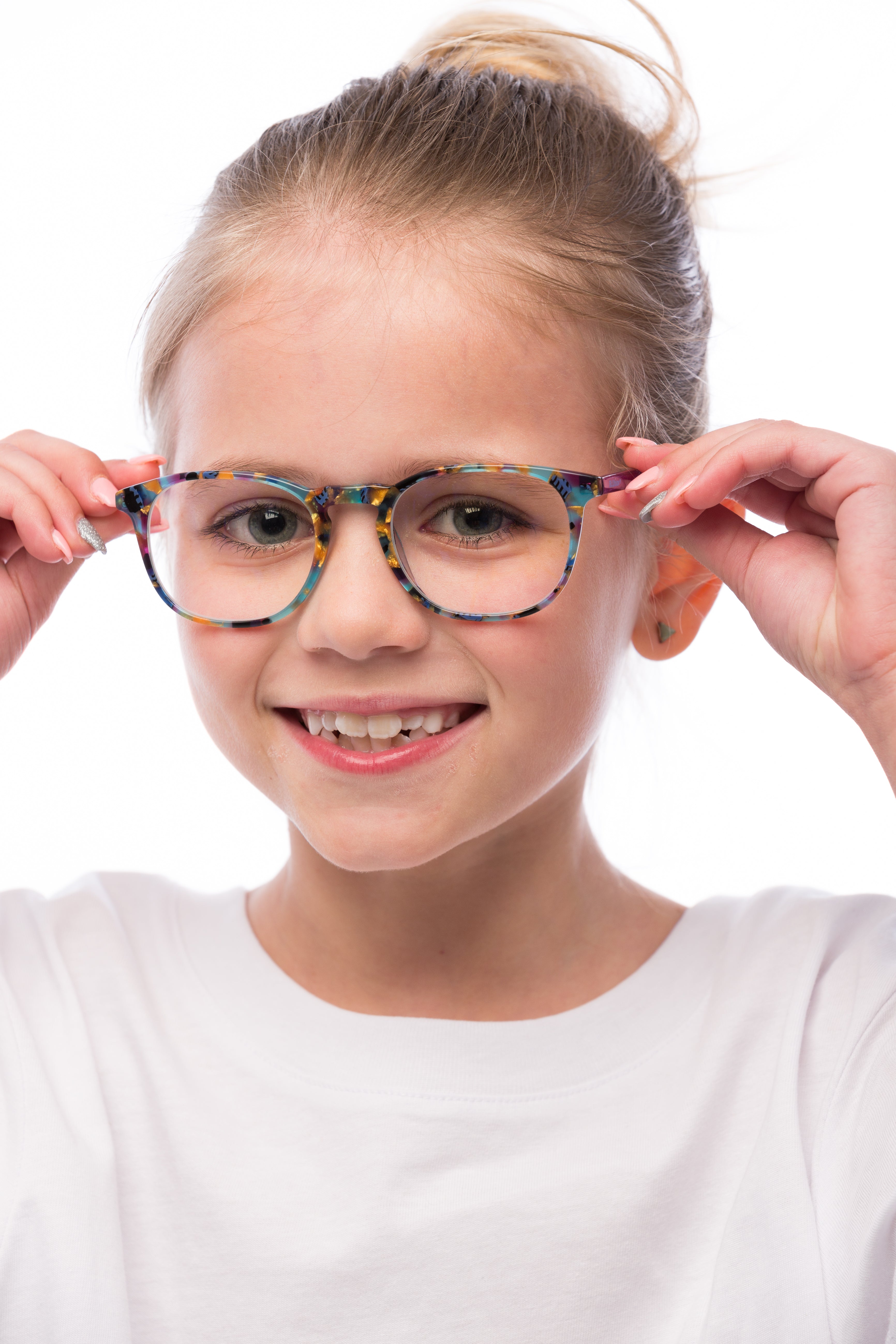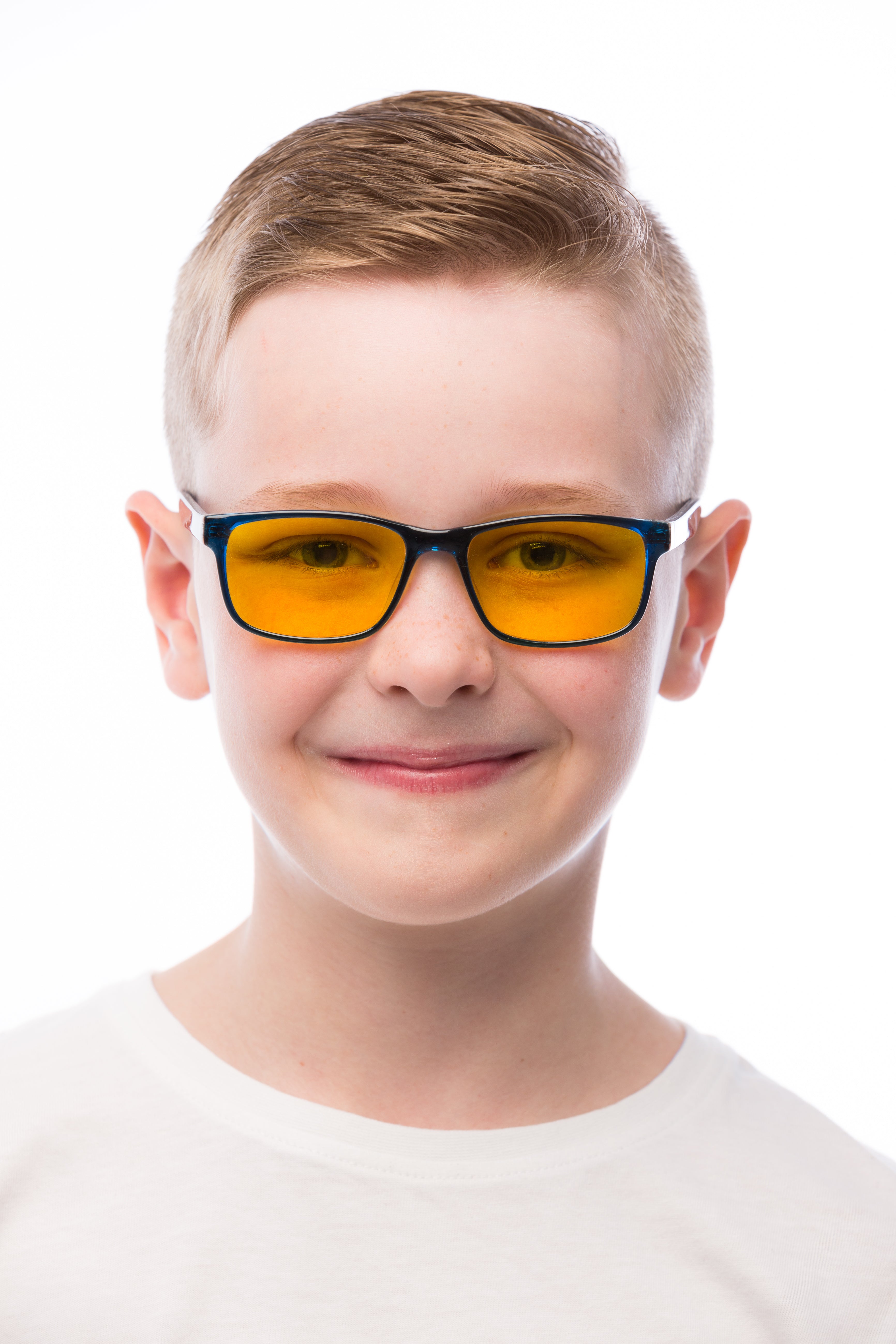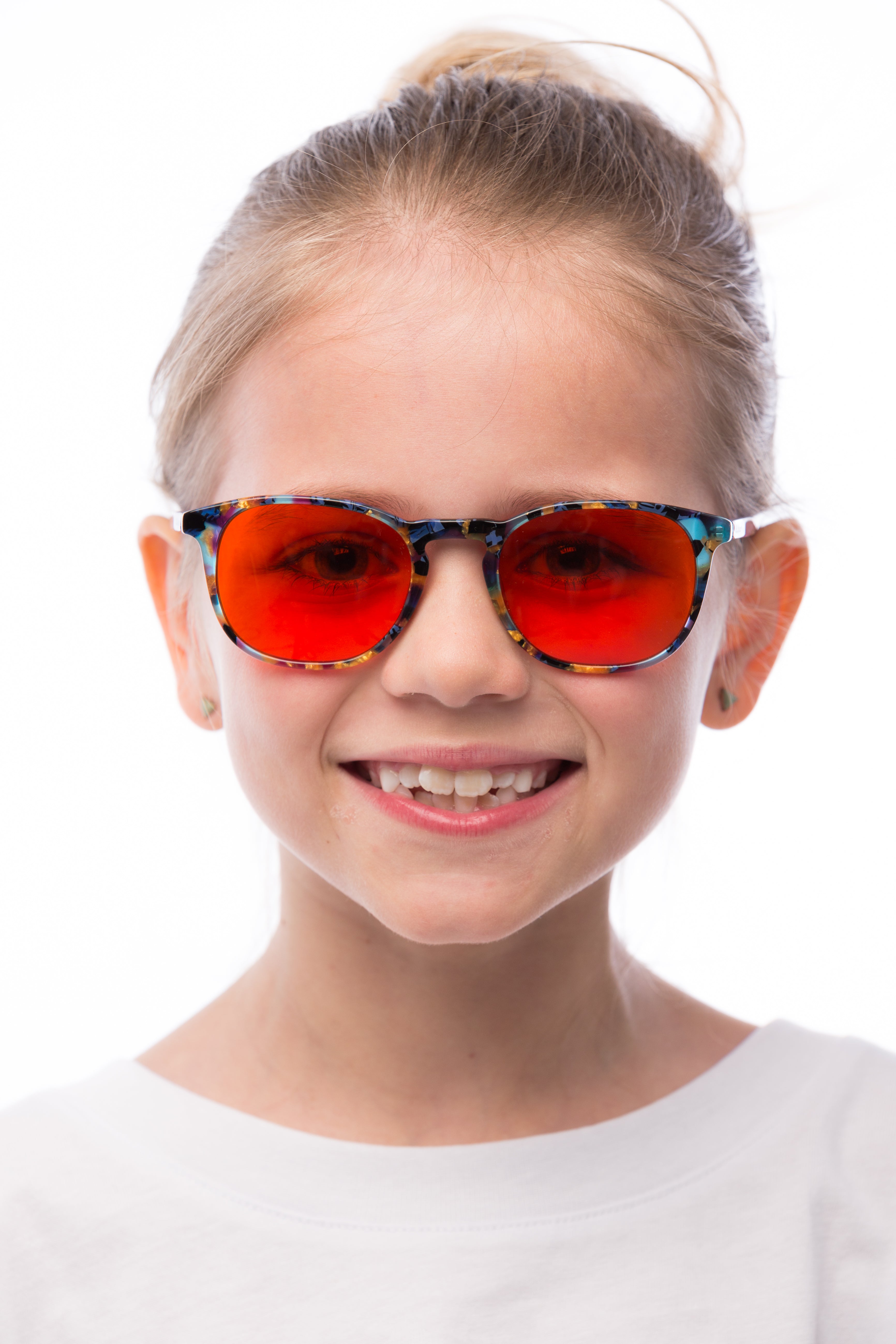How to Choose the Best Kid’s Blue Light Glasses?
Andy MantExposure to blue light has been increasing for the last 20 years. Since the advent of the smart phone and the accompanying rise in other back lit digital devices, your exposure to harmful blue light has intensified. Almost half of children in the USA own a smartphone.
As a parent you probably grew up playing outside and with toys that did not emit blue light. Today your children are being educated in school with iPads, screens and smart phones. At home they are exposed to intensive high energy visible blue light from televisions and laptop computers.
With all this extra blue light, our children could be damaging certain aspects of their health. It’s time to act against the damaging effects of blue light and give your kids the start in life they deserve.
What is Blue Light and how does it Impact Kid’s Health?
Blue light is high energy visible (HEV light) light that is emitted both naturally from the sun and artificially from LEDs and fluorescent lighting.
Top Ten Devices That Emit Harmful Blue Light
- Smart phones
- Televisions
- Computer screens
- Tablets
- Laptop computers
- e-Readers
- House lights
- Office lights
- Fridge light
- Kitchen appliances

Electronic devices radiate EMF radiation which you can shield against using EMF radiation blocking products for kids.
Studies has demonstrated that artificial blue light is harmful to the human eye, disrupts our sleep and leads to conditions such as digital eye strain and computer vision syndrome.
Our kids are no exception to the potentially damaging effects of blue light, in fact studies have shown that kids are more susceptible to blue light than adults. According to NPR 53% of children own a smart phone.
According to the Centers for Disease Control and Prevention (CDC) the average daily hours of screen time per cohort are listed below
- 8-10 years old: Six hours
- 11-14 years old: Nine hours
- 15-18 years old: Seven and 1/2 hours
The damaging impact of blue light on your children's eyes and sleep has been well documented in the scientific literature.
Kid’s and Blue Light
As parents you understand the desire to protect your children from harm. It seems that blue light exposure could be causing harm to kid’s eyes. One study showed that children can incur eye cell damage when exposed to blue light.
Over time this may lead to conditions such as digital eye strain and computer vision syndrome.
Blue light has also been shown to disrupt children’s sleep. A fantastic clinical trial in 2014 showed that adolescent children who did not block blue light after sunset had poorer sleep quality than those who wore blue light blocking glasses before bedtime.
It has been widely documented in the academic literature that blue light and green light exposure before bed disrupts the production of the sleep hormone melatonin. This is not only true in adults but also in children.
Disruption to sleep can occur from exposure to blue and green light after sunset. This zone of light needs to be blocked before bed in order for optimised melatonin production and better sleep quality.
Sleep is paramount for children’s development. By limiting the amount of screen time your children have before bed is a fantastic way to improve the quality of their sleep.
Types of Blue Light Glasses for Children
There are 3 different types of blue light glasses for children. When choosing the correct pair of blue light blocking glasses for kids you need to understand that their light needs fluctuate throughout the day. You can learn more about how your light needs change from day to night by reading our lens colour guide.
Computer Glasses for Kids
Computer glasses are a type of blue light glasses that has a clear lens. They are specifically designed to filter blue light during the day when using electronic devices. Studies have shown that when you apply a blue light filter you can reduce the harmful effects of blue light.

If your child uses digital devices such as smart phones, computer screens or televisions during the day its best to have them wear a pair of precision computer glasses with an anti reflective coating to significantly reduce eye strain. Screen use in kids is only increasing due to remote learning.
Light Sensitivity Glasses for Kids
Light sensitivity glasses are blue light blocking glasses that have a yellow tint. Light sensitivity, also referred to as photophobia, is when a child has a reaction to bright light.
Symptoms of photophobia include migraine headaches, digital eye strain and sore eyes. Studies have indicated a specific rage of light between 415nm and 455nm which can negatively impact kids health and sleep.

By blocking all blue light that falls between 415nm to 455nm you can reduce the symptoms of photophobia and help your child’s eyes.
Light sensitivity glasses from BON CHARGE block 100% of blue light that falls between 400nm and 455nm making them the best glasses for light sensitivity in kids.
Blue Light Blocking Glasses for Kids
Sleep is the cornerstone of your child’s development. However, as we have seen in studies, blue light after dark can disrupt melatonin production and damage your children's sleep.
If your child uses a digital device, watches television or is under artificial light after sunset you should take steps to help them block blue light and dramatically improve their sleep and regulate their circadian rhythms.

Improving sleep can be achieved by using a good quality pair of kids blue light blocking glasses. Blue light glasses for sleep have red or dark amber tinted lenses. They are typically worn 2 to 3 hours before bed to improve melatonin production. Ensure they block 100% of blue and green light between 400nm to 550nm for optimal results.
Prescription Blue Light Glasses for Kids
Prescription lenses can also be made for children that come infused with blue light blocking lenses. BON CHARGE offers all kid’s glasses in non-prescription, prescription and reading magnification options which are impact resistant and designed for kids.
How to Choose the Best Blue Light Glasses for Kids
During the day children need to filter down blue light to limit ocular damage. After sunset children need to block 100% of blue light to improve their sleep.
One pair of blue light glasses for kids won’t be enough for optimal light management. A pair for daytime and a pair for evening use is paramount.
When choosing a pair of blue light glasses for your kids is essential to understand that cheaper pairs of blue light glasses often don’t block in line with the science. Avoid cheap pairs from amazon as they may not work as effectively as an optical lab made pair.
Blue light glasses for sleep must block between 400nm and 550nm for optimal sleep. If you already have a pair of kids blue light glasses you can test them to see if they are actually blocking blue light correctly.
If you have not purchased a precision pair of blue light gasses for your child for improving sleep then make sure you request a spectral lens report first. The best blue light glasses for children should block 100% of blue and green light up to 550 nanometers.
The below image is a spectrum wavelength report from a pair of BON CHARGE Kids Blue Light Blocking Glasses.
Other Ways to Protect Kid’s Eyes from Blue Light
Blue light glasses for kids are a great way to manage damaging blue light. However, there are a few alternative measures you can take to reduce your children's exposure to harmful blue light.
Top 5 ways to Limit Kid’s Blue Light Exposure
- Set a time limit on screen time per day
- Get your kid’s outside to play more often
- Install circadian friendly lighting in their bedroom
- Turn their smart phone screen red
- Follow the 20-20-20 rule. Get your kids to look at an object 20 feet away for 20 minutes, every 20 seconds.
Blue light is all around us and your children are particularly susceptible to the dangers of blue light. It is essential to understand that artificial blue light is not just emitted from their smart phone and the television. Blue light is found practically anywhere there is an LED light source.
For example your child could be reading a book under house lighting or fluorescent lighting and this would mean they are being exposed to harmful artificial blue light.
Natural blue light from the sun is extremely beneficial for children's developing circadian rhythms. Blue light from the sun has been shown to be the entrainer of circadian rhythms. If your children are playing outside ensure they play sun safe and wear a good precision pair of kids sunglasses that block 100% of UV light.
Final Thoughts
The damaging effects of blue light exposure of children's eye health and sleep has been well documented in the academic literature. To ensure you protect your children's eyes and sleep from harmful blue light it may be an excellent idea to have them wear a science backed pair of blue light blocking glasses.

BON CHARGE manufactures the best blue light glasses for kids. Each pair is infused with science, made in an optics laboratory and comes in the latest trendiest styles that your children will love to wear.



